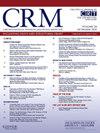Young adults with acute coronary syndrome undergoing percutaneous coronary intervention: Insights from the Houston Methodist Young ACS-PCI Registry
IF 1.9
Q3 CARDIAC & CARDIOVASCULAR SYSTEMS
引用次数: 0
Abstract
Background
Limited data exist on the risk profile and prognosis of young patients undergoing percutaneous coronary intervention (PCI) for acute coronary syndrome (ACS). This study sheds light on the burden of cardiovascular risk factors and outcomes in this population.
Methods
The Houston Methodist Young ACS-PCI registry is a retrospective analysis of young adults (18 to 50 years) undergoing PCI for ACS between 2010 and 2022. Outcomes of interest were major adverse cardiovascular events (MACE: all-cause mortality, myocardial infarction (MI), ischemic stroke) at one year.
Results
Among 629 patients (median age, 46 years, 23.5% women, and 65.3% White adults), 69.2% had Non-ST-Segment Elevation MI. A total of 22.7% had prior MI, 26.2% prior PCI, and 9.2% had prior coronary artery bypass graft surgery. The prevalence of active smoking, dyslipidemia, hypertension, and diabetes was 69.4%, 82.2%, 80.4%, and 39.6%, respectively. Age-adjusted diabetes rates increased over time, while dyslipidemia, hypertension, and obesity rates remained unchanged. The femoral artery was the most common arterial access (85.2%), 72.7% had one vessel disease, 44.3% had the left anterior descending artery as the culprit vessel, and 78.5% of patients received one stent. At a median of 3.8 years, all-cause mortality was 28 deaths per 1000 person-years. At one year, 11.4% experienced MACE; racial and ethnic minority (Black, Hispanic, and Others), dialysis, prior MI, and stent diameter were independent predictors of MACE.
Conclusions
The study highlights a notable burden of cardiovascular risk factors and cardiovascular outcomes in young adults with ACS undergoing PCI, underscoring the need for strategies to enhance risk assessment and guide interventions among young adults.
接受经皮冠状动脉介入治疗的急性冠状动脉综合征年轻患者:休斯顿卫理公会青年 ACS-PCI 登记的启示。
背景:因急性冠状动脉综合征(ACS)而接受经皮冠状动脉介入治疗(PCI)的年轻患者的风险概况和预后数据有限。本研究揭示了这一人群的心血管风险因素负担和预后:休斯敦卫理公会青年 ACS-PCI 登记是对 2010 年至 2022 年间因 ACS 接受 PCI 治疗的年轻成人(18 至 50 岁)进行的回顾性分析。研究结果为一年后的主要不良心血管事件(MACE:全因死亡率、心肌梗死(MI)、缺血性卒中):在 629 名患者中(中位年龄 46 岁,23.5% 为女性,65.3% 为白人成年人),69.2% 患有非 ST 段抬高型心肌梗死。22.7%的患者曾有过心肌梗死,26.2%的患者曾有过PCI,9.2%的患者曾有过冠状动脉旁路移植手术。主动吸烟、血脂异常、高血压和糖尿病的患病率分别为 69.4%、82.2%、80.4% 和 39.6%。年龄调整后的糖尿病患病率随时间推移而增加,而血脂异常、高血压和肥胖的患病率则保持不变。股动脉是最常见的动脉通路(85.2%),72.7%的患者为单支血管疾病,44.3%的患者的罪魁祸首是左前降支动脉,78.5%的患者接受了一种支架治疗。在中位 3.8 年的时间里,全因死亡率为每千人年 28 例死亡。一年后,11.4%的患者发生了MACE;少数种族和民族(黑人、西班牙裔和其他)、透析、既往心肌梗死和支架直径是MACE的独立预测因素:该研究强调了接受PCI治疗的ACS年轻成人的心血管风险因素和心血管结局的显著负担,突出表明需要制定战略来加强风险评估并指导年轻成人的干预措施。
本文章由计算机程序翻译,如有差异,请以英文原文为准。
求助全文
约1分钟内获得全文
求助全文
来源期刊

Cardiovascular Revascularization Medicine
CARDIAC & CARDIOVASCULAR SYSTEMS-
CiteScore
3.30
自引率
5.90%
发文量
687
审稿时长
36 days
期刊介绍:
Cardiovascular Revascularization Medicine (CRM) is an international and multidisciplinary journal that publishes original laboratory and clinical investigations related to revascularization therapies in cardiovascular medicine. Cardiovascular Revascularization Medicine publishes articles related to preclinical work and molecular interventions, including angiogenesis, cell therapy, pharmacological interventions, restenosis management, and prevention, including experiments conducted in human subjects, in laboratory animals, and in vitro. Specific areas of interest include percutaneous angioplasty in coronary and peripheral arteries, intervention in structural heart disease, cardiovascular surgery, etc.
 求助内容:
求助内容: 应助结果提醒方式:
应助结果提醒方式:


